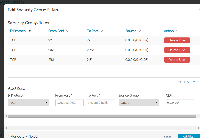Details
-
Type:
 extRequest
extRequest
-
Status: Closed
-
Priority:
 Major
Major
-
Resolution: Fixed
-
Fix Version/s: 2021
-
Component/s: None
-
Labels:None
-
Sender Email:
-
External Participants:
Description
I've opened the 9092 TCP port in my VM (130.206.126.234) and it is not accessible from the outside.
I've run a netcat listening in that port:
$ nc -l 9092
Then I've run a telnet from a remote machine (e.g. my laptop):
$ telnet 130.206.126.234 9092
Trying 130.206.126.234...
telnet: connect to address 130.206.126.234: Operation timed out
telnet: Unable to connect to remote host
Please, have a look on the attachment in order to check the port is opened.
Regards,
Francisco

There is a firewall active inside the VM. That firewall is the one which is preventing your port to be reachable, not Openstack security groups.
We'll need to investigate if there is a problem with the base image or if this just happened when you installed any new packages.
regards,
José Ignacio.